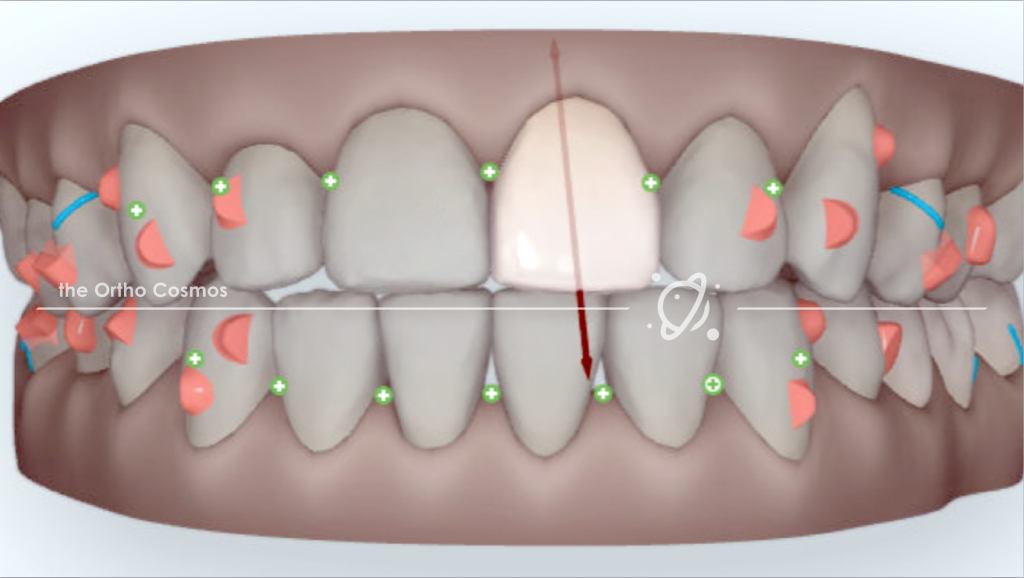Clincheck Design and Workflow
Since the launch of Clincheck 4.0, Invisalign began offering a better way to manage case modifications. In earlier iterations of the software, communication between the doctor and the technician was limited to text requests. Taking visual goals and attempting to explain them into a text format creates many challenges and multiple areas where a doctor’s goals are lost in translation. Many of us created a long list of common commands that would be used for our cases, and hoped that each set of requests would return with a clincheck that matched what we wanted. It was not uncommon for cases to take a list of eight to ten different requests in order to improve the setup.
Over time, many of us would exchange clincheck text strings much like collectors trade baseball cards. Those with the most diverse collections of requests commanded Invisalign expert status. And yet, those requests depended on each of our technician’s understanding of those lists of text commands. With the launch of 3D controls, a critical change was made to the design of aligner treatment. Being able to make immediate changes to a clincheck has given doctors an opportunity to gain control and streamline the clincheck workflow. Instead of making a series of text requests, the aligner design can be mostly controlled using the direct interface. Think of the difference between using a keyboard with DOS command line requests on a computer interface vs. the use of a mouse with point and click actions in a Windows interface.
The new interface now offers a visual process that has the potential to improve the design of the appliance, and also alleviate many inefficiencies from the clincheck workflow to save doctor time. When growing the utilization of Invisalign in a modern, digital practice, clincheck time becomes a bottleneck that can consume your doctor time in and out of the office. Despite adding efficiencies in the orthodontic workflow during patient hours, it can be challenging to keep clincheck time from overflowing into a doctor’s personal time. Therefore, it is important to not only take control of clinchecks to achieve better clinical outcomes, but also take control of your clinchecks to develop efficiencies in clincheck development.
Improving Outcomes
Taking control of the clincheck process, and implementing best practices for appliance design are not common. Statistics from Align Technology show a large number of clinchecks are approved without any modifications. And yet doctors are frustrated that they don’t achieve appropriate outcomes. Many expect the technicians to setup the case for success. Success comes from designing a treatment plan with proper aligner modification, staging, and force systems. We have to remember that the clincheck is not a view of the desired outcome, but the design of the appliance. The aligner is a delivery device to the force systems we place into the Clincheck software. The 3D controls allow for a better and more visual design of the appliance. They also allow the proper placement and use of attachments.
Improving Efficiency
Taking control of the clincheck means taking advantage of the new tools to decrease the number of modifications and decrease the amount of clincheck time by implementing more efficient processes. Consider first who in your team can take on tasks that can be delegated away from the doctor. Case submission and uploading records are two easy areas to be more efficient. An invisalign coordinator in the office can also keep the pending list under control, and scrub the preliminary cases to make sure clinical preferences are followed. This alleviates the doctor time to the most critical step, which is designing the custom treatment plan.
Further efficiency comes from following a systemized method for clincheck review. A systemized clincheck process means that review of the clincheck follows a habitual series of repeatable steps for modifications so nothing is missed. Missing necessary modifications mean that the clincheck has to be reviewed multiple times. Multiple reviews, mean additional times where mental focus, the patient’s chart and time have to be allotted to review the case. A systemized review process increases productivity by taking control of attention and helps you build a mental model of what you want the treatment to follow.

Leave a Reply